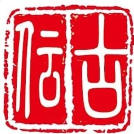I did gave it a thought, but there are several reasons why I don't do that.
First and foremost I'm a father of a 2 years old, so my presence here is very much needed.
Another reason is that for me this is an hobby, and actually I'd like to keep it that way. There's basically no professional tsubashi even in Japan, they all do side jobs (mostly jewelry), that's because nowadays is very hard to make a living out of it. So I rather work on my spare time, doing the occasional commission and my experiments.
Also even in Japan nowadays nobody is working in this style, as you said there was Issei which was a Mukansa, but he left no student and his books didn't provide any information that I didn't knew already. So there won't be much help in going there to study as nobody can actually teach me. I've got so far with my own means, so I think I can keep doing it.
Of course I go almost every year to Japan to study tosogu (and nihonto), so I think I'll keep this way, at least for some years 🙂








